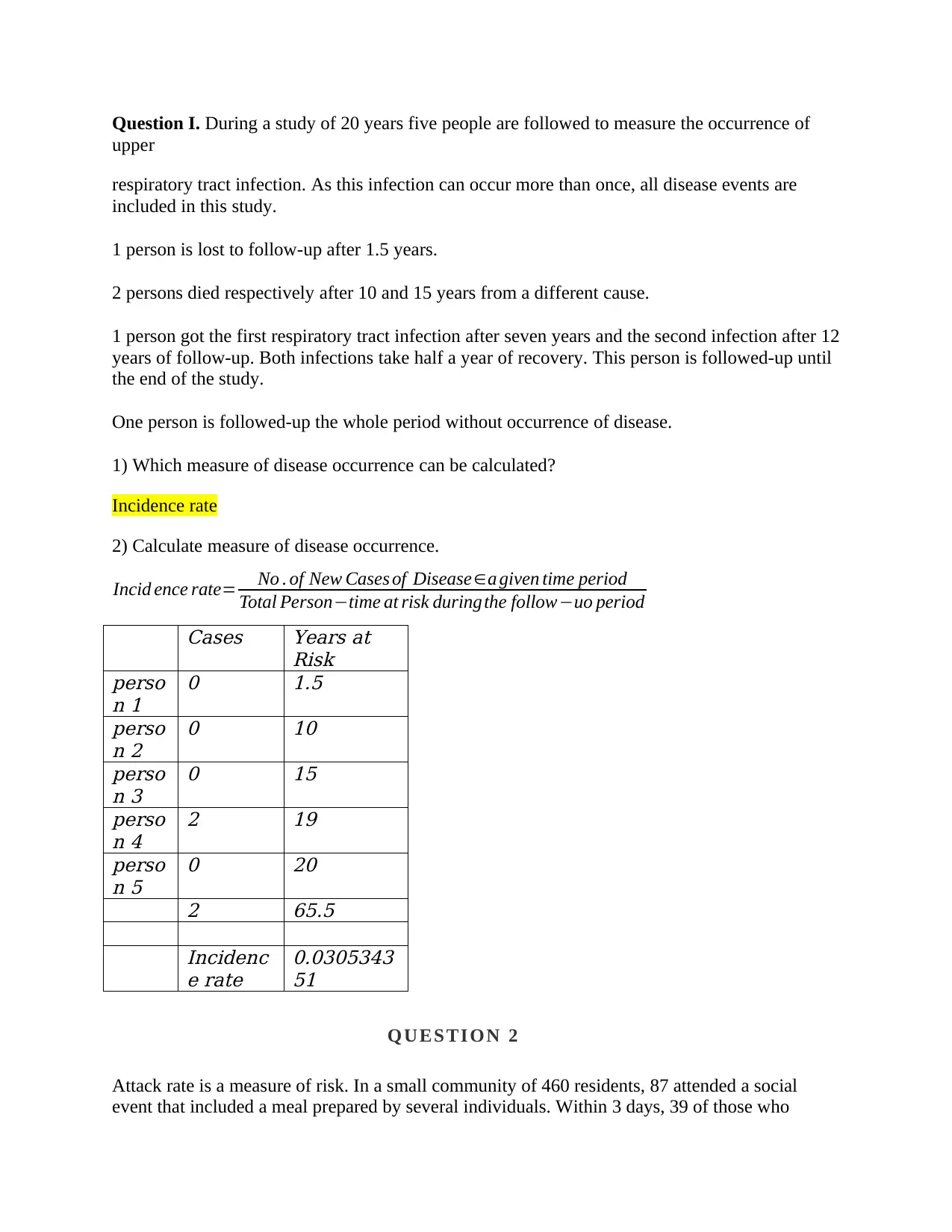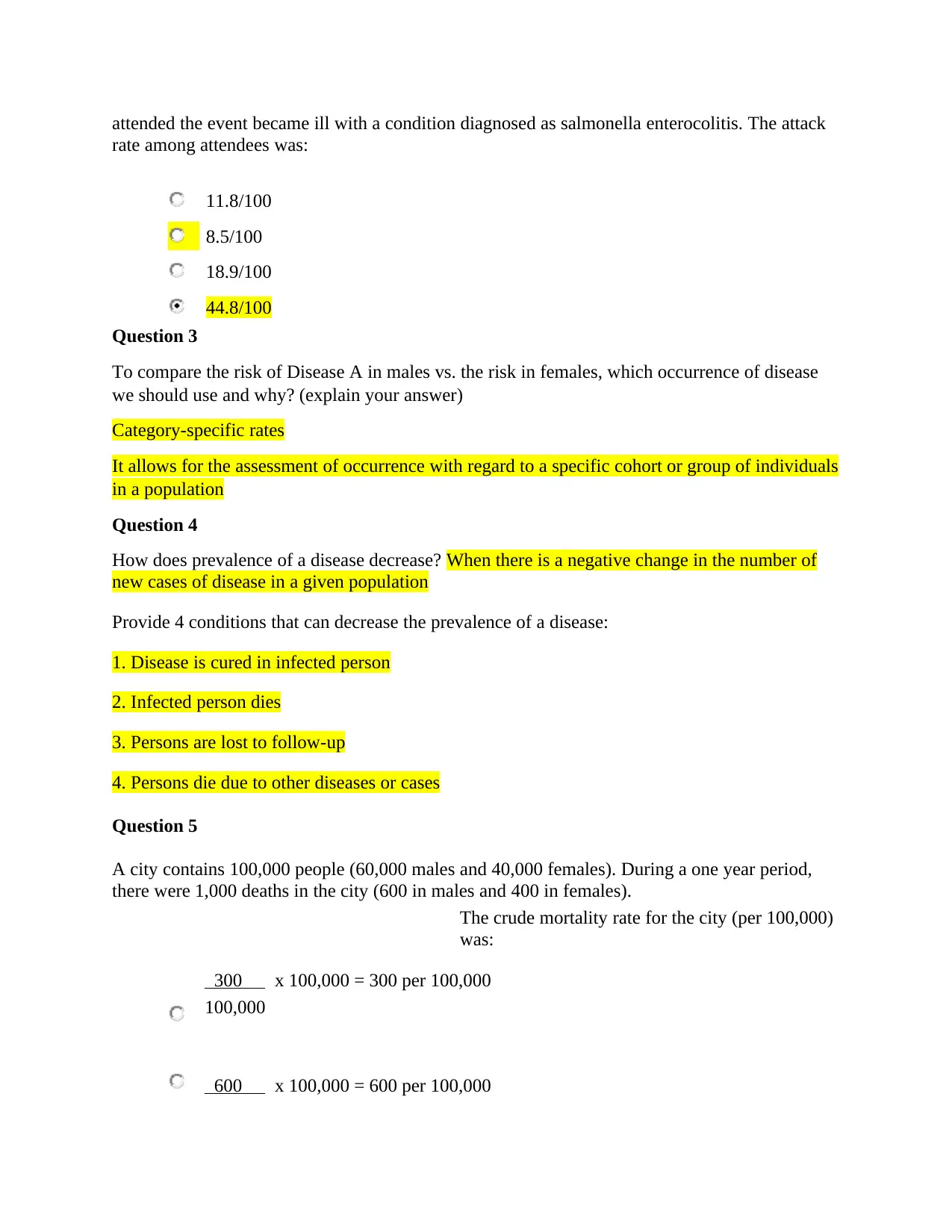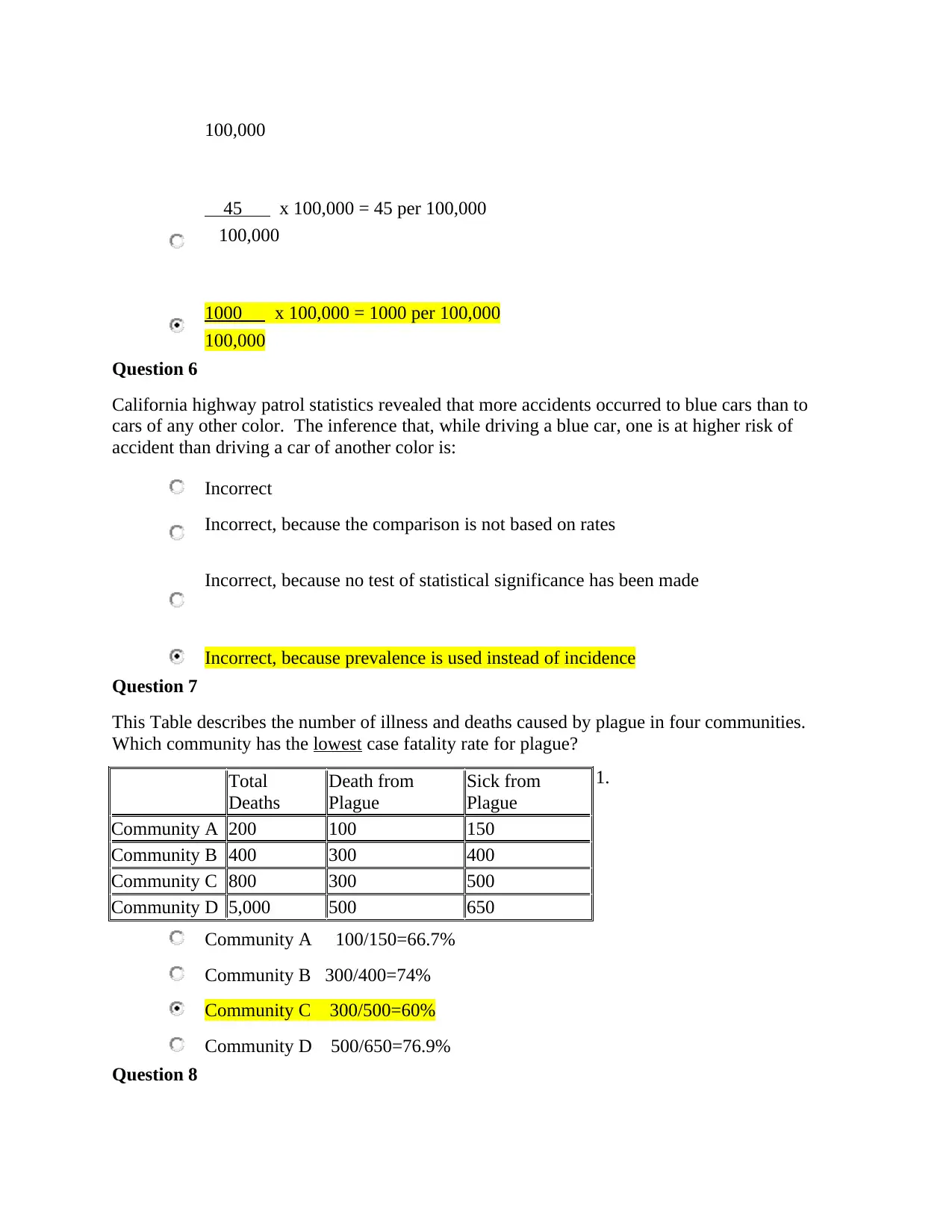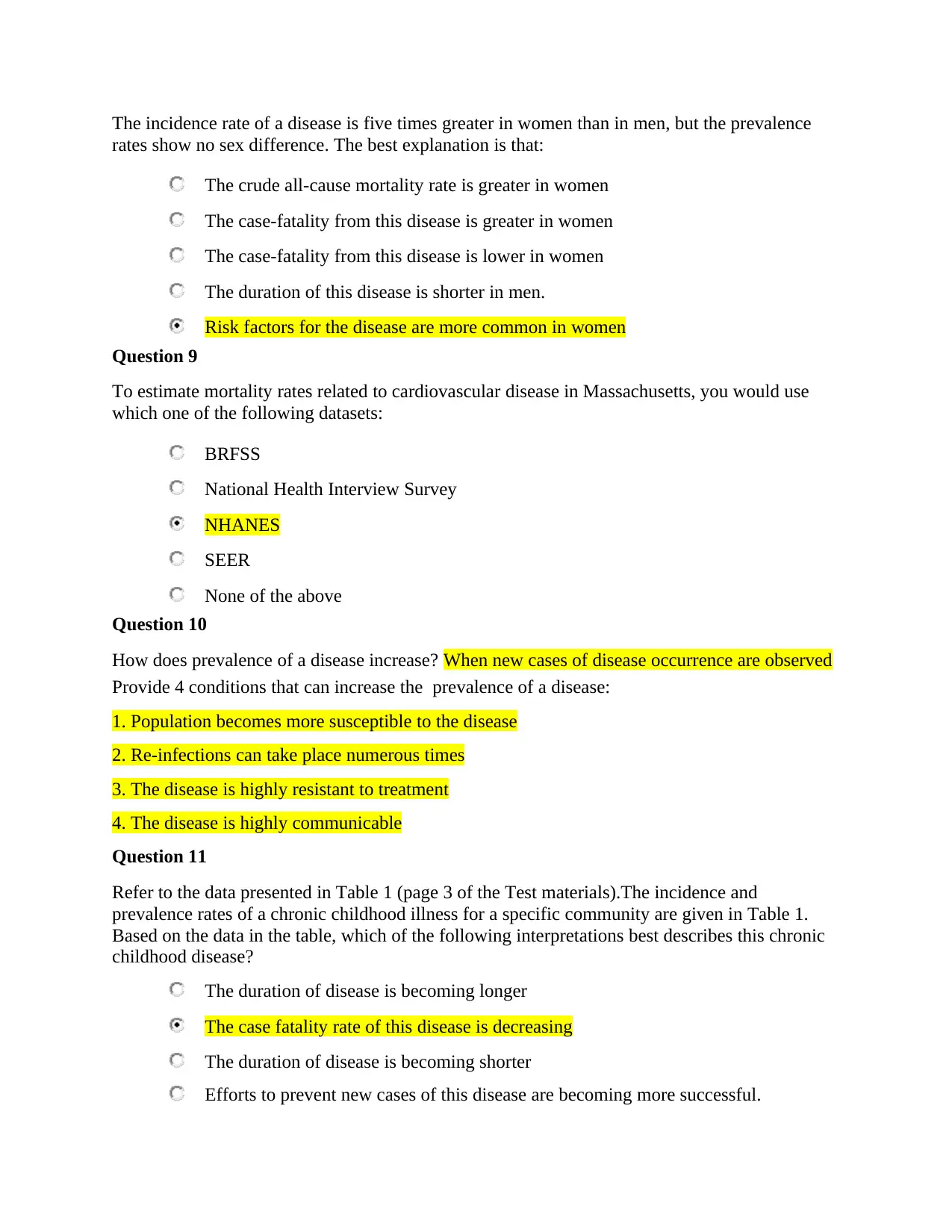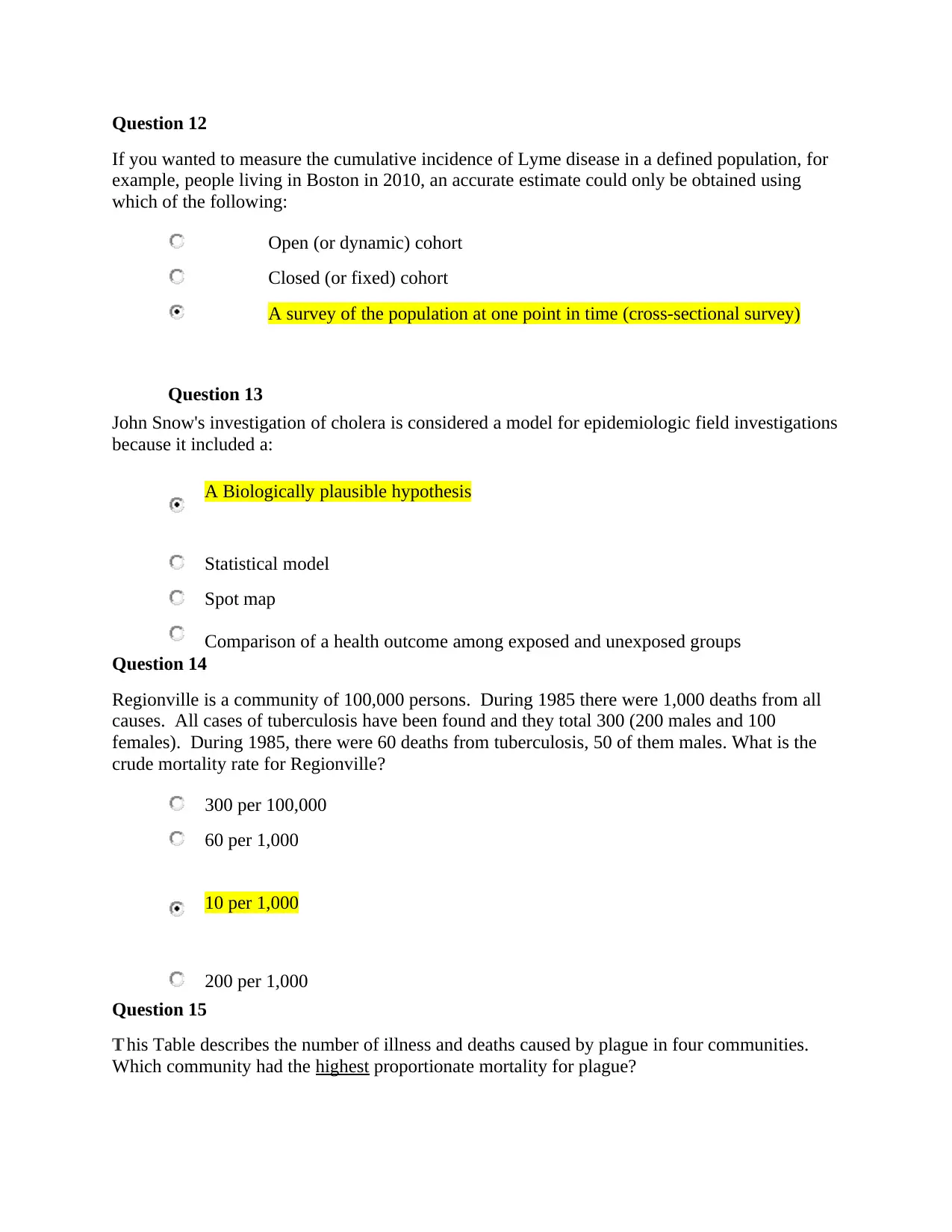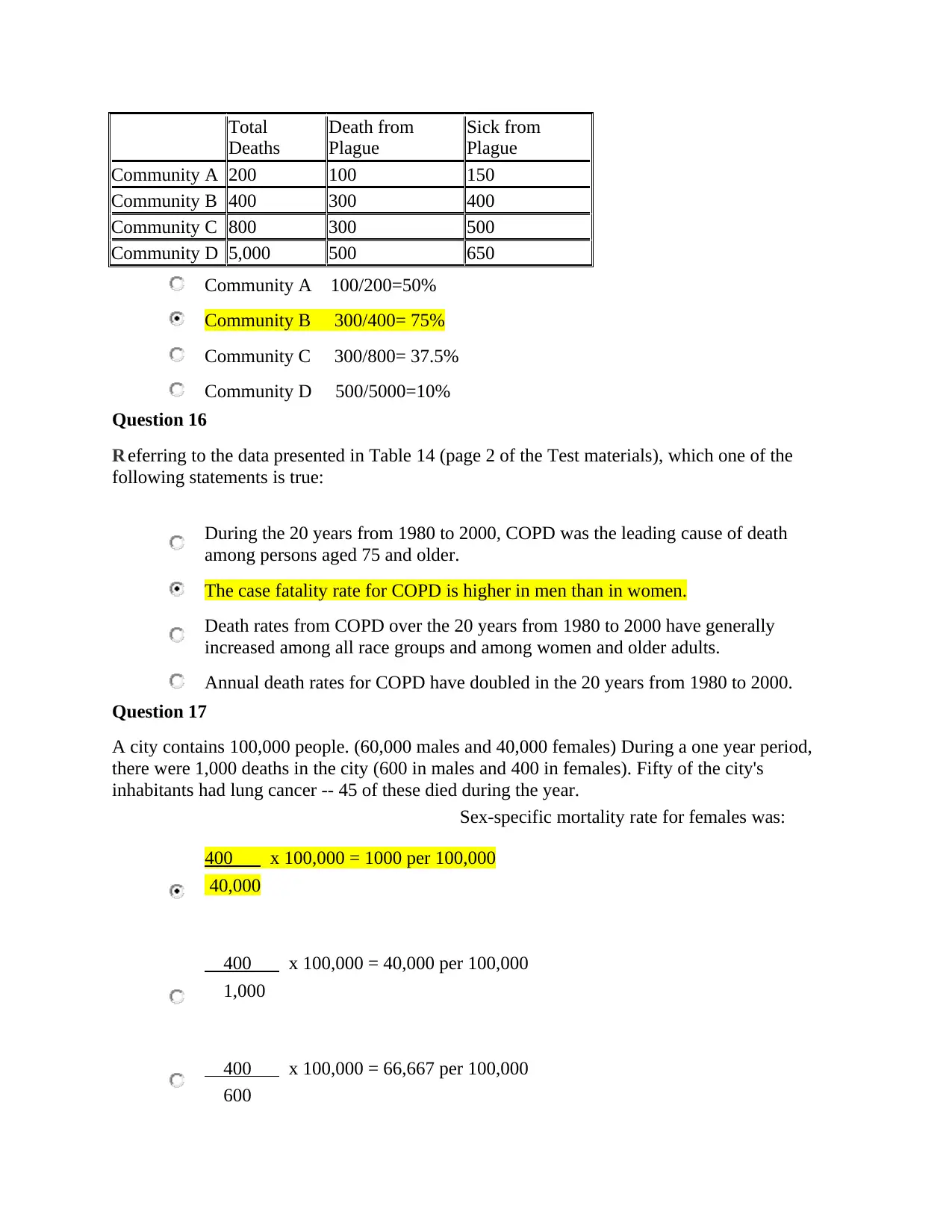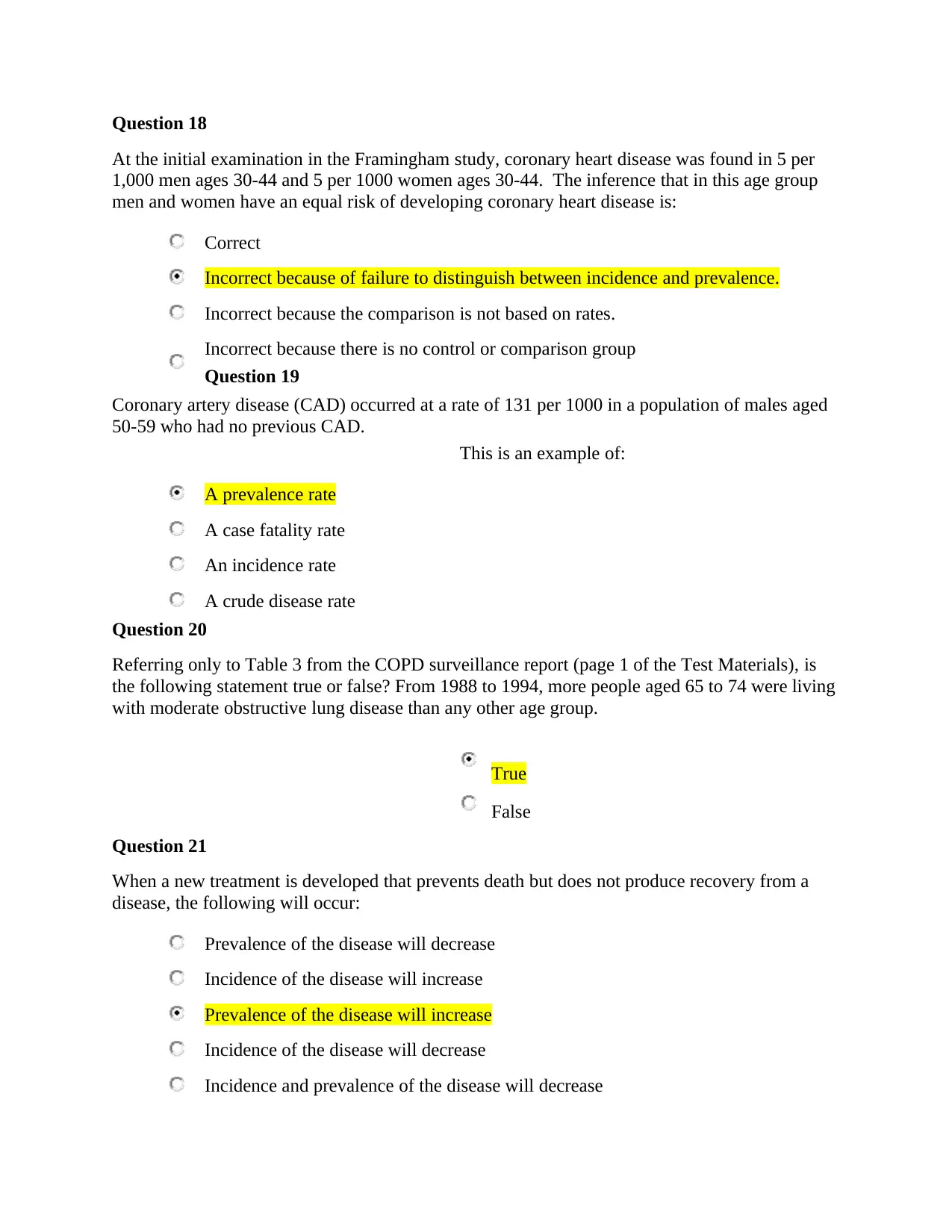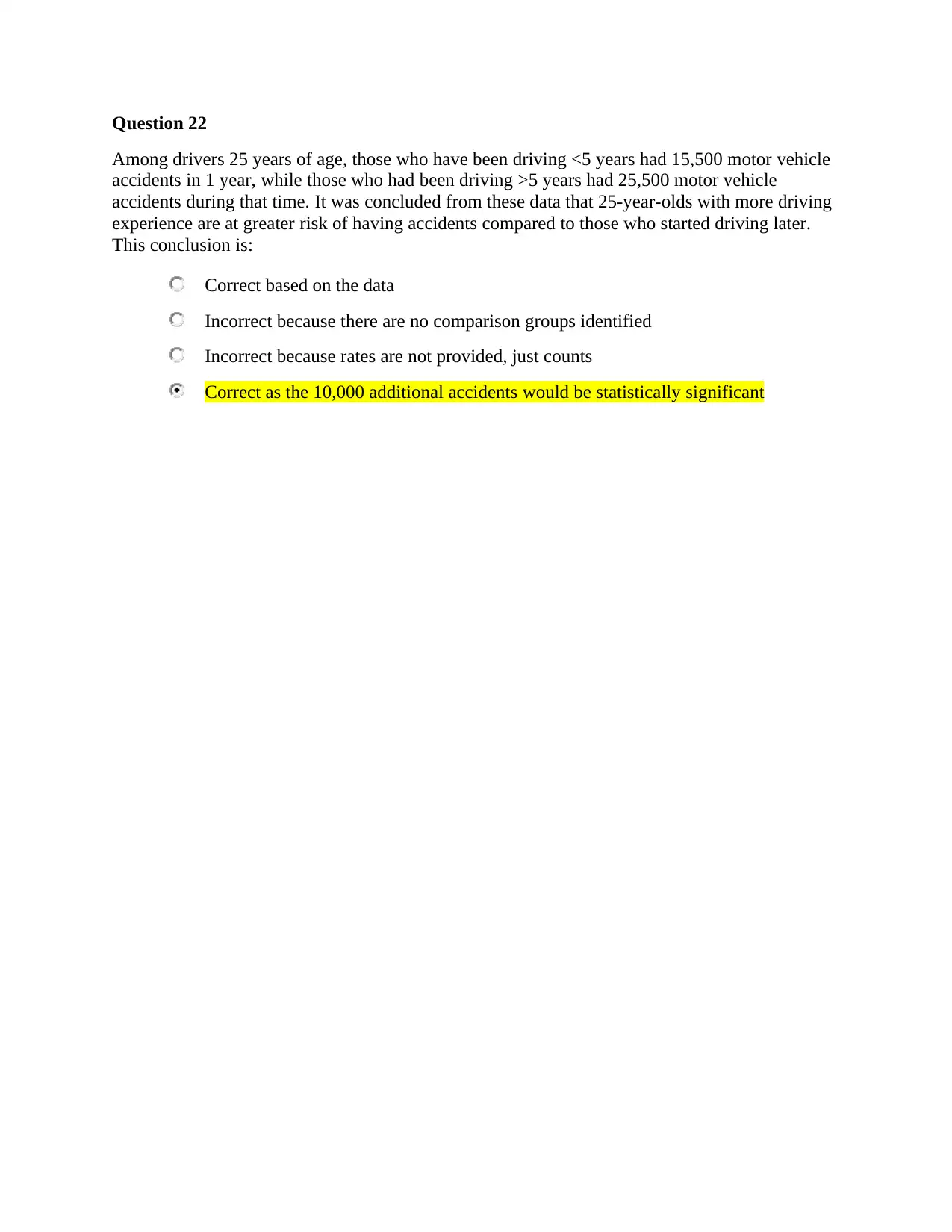In this assignment we will discuss about questions and below are the summaries point:-
The study follows five people over 20 years to measure the occurrence of upper respiratory tract infections. Incidence rate is used as a measure of disease occurrence.
The calculated incidence rate is 0.0305343 per person-year at risk.
The attack rate among attendees of a social event was 8.5/100, indicating the proportion of attendees who became ill with salmonella enterocolitis.
To compare the risk of Disease A in males vs. females, category-specific rates should be used as they allow for the assessment of occurrence within specific cohorts or groups.
Prevalence of a disease decreases when there is a negative change in the number of new cases, including cure, death, loss to follow-up, and deaths due to other diseases.
The crude mortality rate for the city with 100,000 people was 1,000 per 100,000.
The inference that driving a blue car increases the risk of accidents compared to other car colors is incorrect.
Community A has the lowest case fatality rate for plague at 66.7%.
The incidence rate is higher in women than men, but the prevalence rates show no sex difference, suggesting that the mortality rate is higher in women.
![[object Object]](/_next/static/media/star-bottom.7253800d.svg)
![[object Object]](/_next/static/media/star-bottom.7253800d.svg)
